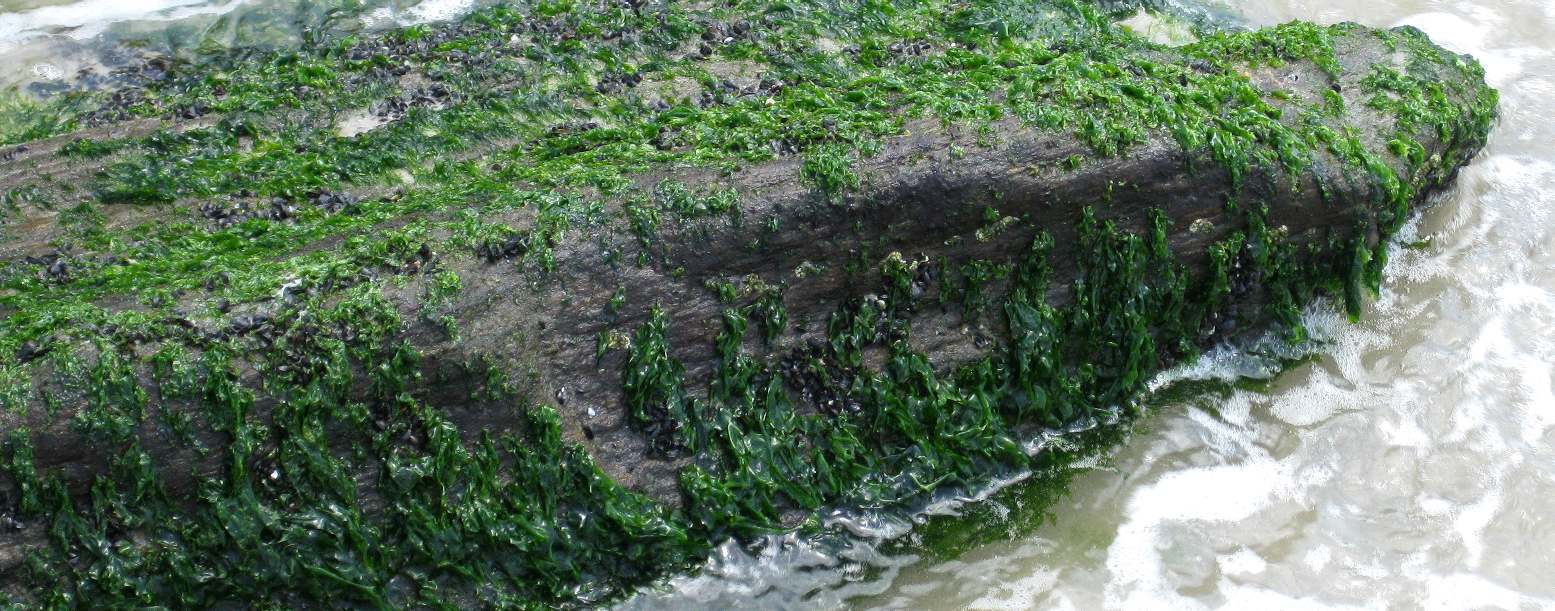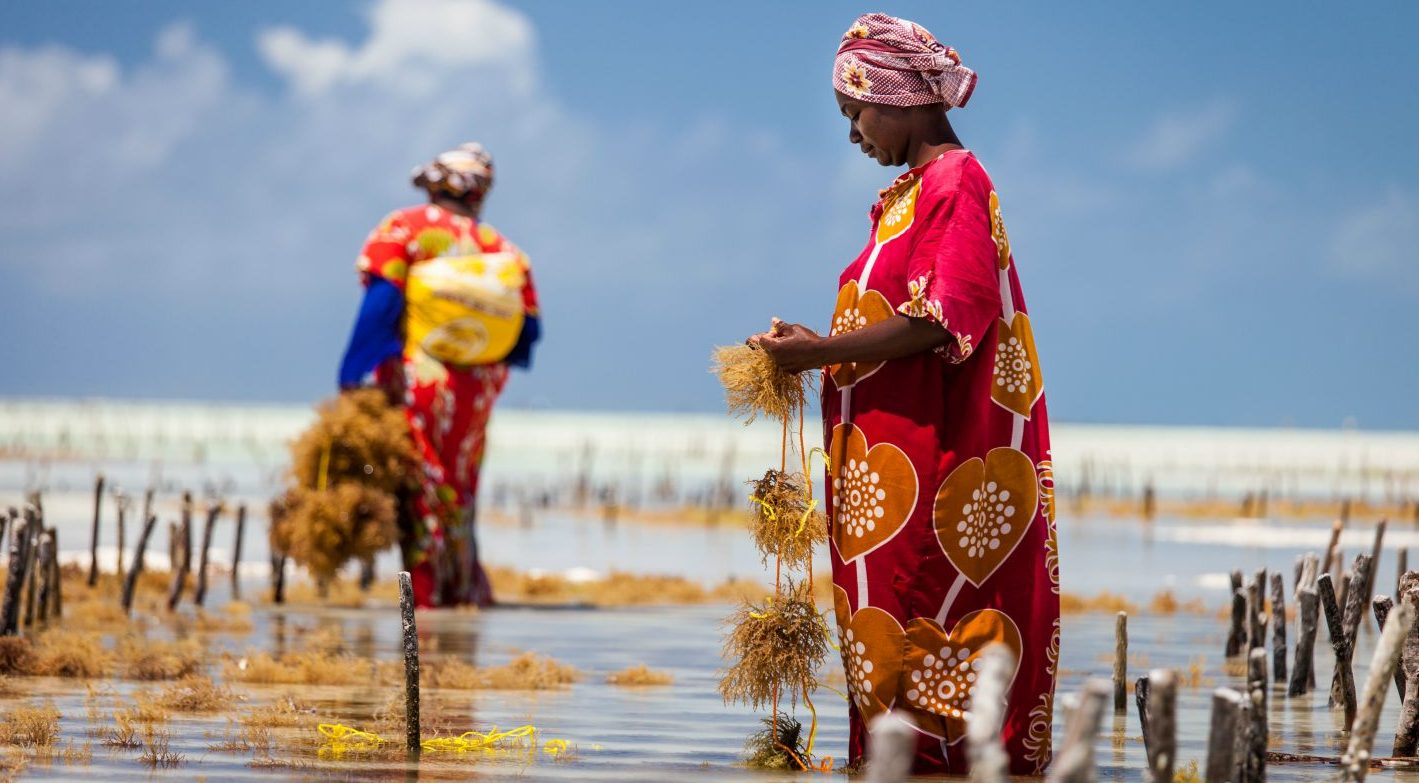|
S
E A W E E D
ABOUT - HOME -
A-Z INDEX

ATLANTIC
SEAWEED - An every day sight that we take for granted.
Seaweed or macroalgae refers to several species of macroscopic, multicellular, marine
algae, that includes kelp.
The term includes some types of red, brown, and green macroalgae. Seaweed may provide excellent opportunities for its industrial exploitation as they could be a source of multiple compounds (i.e. polysaccharides, proteins and phenols) with applications such as food and animal feed, pharmaceuticals or fertilizers.
Seaweed has a variety of purposes, for which it is farmed or foraged from the wild.
At the beginning of 2011, Indonesia produced 3 million tonnes of seaweed and surpassed the Philippines as the world's largest seaweed producer. By 2011, the production was estimated to have reached 10 million
tonnes.

FOOD
Seaweed is consumed by coastal people, particularly in East Asia, e.g. Japan, China, Korea, Taiwan, and Southeast Asia, e.g. Brunei, Singapore, Thailand, Burma, Cambodia, Vietnam, Indonesia, Philippines, and Malaysia, and also in South Africa, Belize, Peru, Chile, the Canadian Maritimes, Scandinavia, South West England, Ireland, Wales, California, and Scotland.
In Asia, Gim (Korean food) (김, Korea), nori (海苔, Japan), zicai (紫菜, China) are sheets of dried Porphyra used in soups, sushi wrap or onigiri (rice balls). Chondrus crispus (commonly known as 'Irish moss' or carrageenan moss) is another red alga used in producing food additives, along with Kappaphycus and gigartinoid seaweed. Porphyra is a red alga used in Wales to make laver. Laverbread, made from oats and the laver, is a popular dish there. In northern Belize, edible seaweed are mixed with milk, nutmeg, cinnamon, and vanilla to make a common beverage affectionately called "dulce" (or "sweet").
Seaweed are also harvested or cultivated for the extraction of alginate, agar and carrageenan, gelatinous substances collectively known as hydrocolloids or phycocolloids. Hydrocolloids have attained commercial significance as food additives. The
food industry exploits their gelling,
water-retention, emulsifying and other physical properties. Agar is used in foods such as confectionery, meat and poultry products, desserts and beverages and moulded foods. Carrageenan is used in salad dressings and sauces, dietetic foods, and as a preservative in meat and fish products, dairy items and baked goods.
The development of seaweed as an alternative and sustainable source of food and animal
feed ingredients depends on the sustainability of the natural resource of raw biomass and on moving the process of feed development from laboratory to industrial scale.
Seaweeds
such as sargassum, from the Sargasso
Sea, might be harvested using adaptations of the SeaVax
concept:
SeaVax-Calypso™
AmphiMax-Calypso™
SeaVax-Sargasso™
AmphiMax-Sargasso™
BIODEGRADABLE
STRAWS & CUPS
Seaweed
can be made into straws
to replace plastic.
LINKS
& REFERENCE
https://www.npr.org/sections/thesalt/2017/08/15/543675398/can-we-feed-the-world-with-farmed-fish
http://www.sapea.info/foodfromtheoceans
https://ec.europa.eu/research/sam/index.cfm?pg=nominationscalls
https://ec.europa.eu/research/sam/index.cfm
https://ec.europa.eu/research/sam/index.cfm?pg=oceanfood
https://phys.org/news/2017-12-algae-krill-tough-european-consumers.html

IN
ABUNDANCE - Seaweed as a bed on the Australian coast.
BIOMASS - BUILDING
MATERIALS - CANCER
TREATMENTS - CLOTHING
& SHOES - CO2
SEQUESTRATION
COSMETICS
- FERTILIZERS - FOODS - MEDICINES - MINERALS - PACKAGING - SUPPLEMENTS - VITAMINS
Anchovies
| Bass
| Bream
| Catfish
| Clams
| Cod
Coley
| Crabs
| Crayfish
| Eels
| Grouper
| Haddock
| Hake
| Halibut
| Herring
| Jellyfish
Krill
| Lobster
| Mackerel
| Marlin
| Monkfish
| Mullet
| Mussels
| Oysters
| Perch
| Piranha |
Plaice
| Pollock
| Prawns
| Rays
| Sablefish
| Salmon
Sardines
| Sargassum | Scallops
| Seaweed | Sharks
| Shrimp
| Skate
| Sole
| Sprat
| Squid
| Sturgeon
| Swordfish
| Trout
| Tuna
| Turbot
| Whiting
This
website is provided on a free basis as a public information
service. Copyright © Cleaner
Oceans Foundation Ltd (COFL) (Company No: 4674774)
2022. Solar
Studios, BN271RF, United Kingdom.
COFL
is a charity without share capital.
|
